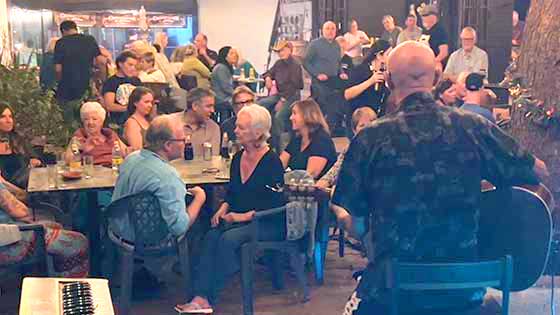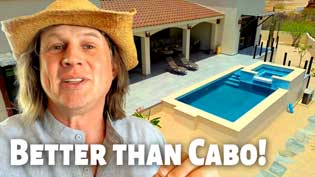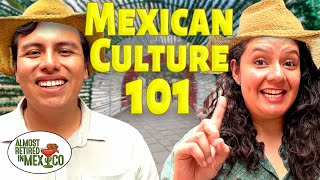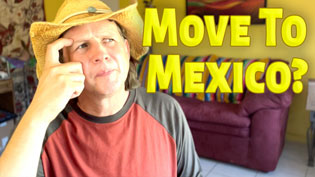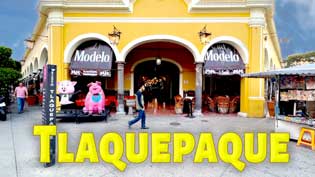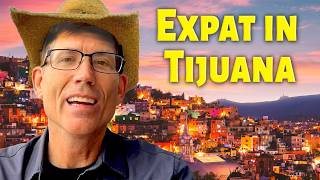Driving a car in Mexico is different from driving a car in the US. You’ll still be on the right side of the road. Green still means go (well, mostly…) And you just need your American or Canadian driver’s license. But there are differences that you need to know to stay safe.
Drivers in Mexico are much more friendly and collective. It’s not a competition (maybe in cities like Mexico City it’s different, but out in the Baja, the rule is “help everyone get where they are going safely.” So shift your mindset. There is no “prove someone wrong, or punish the other driver, or try to maximize your position.”
Think of your turn signals more as “blinkers.” If you’re in a city, they pretty much work to signal that the car intends to turn. But if you are outside a city, the left blinker is very different. It usually mean, “it’s safe for you to pass me.” Once again, think of that collective attitude. The car ahead of you has a better view of oncoming traffic – especially if they are a truck. So they will turn on that left blinker to help you out. And drivers aren’t too concerned about passing zones and no-passing zones. So if it’s safe to pass in a no-passing zone, people will pass and drivers will signal that it’s OK to pass. If you don’t plan on passing, just leave more room between you and the car ahead. If you get close, they’ll assume you want to pass. It’s also polite to slow a bit and move over to the right to help someone pass.
Now passing in a no-passing zone is still illegal and you might get pulled over. But just note that it’s commonly done.
Your US or Canadian Drivers License will do. As long as you’re not a permanent Mexico resident living on mainland Mexico, you don’t need a Mexican driver’s license. Tourists, temporary and permanent residents driving US plated cars or rental cars with Mexican plates should have a US driver’s license. Pretty much your Driver’s License should match the country of your car’s license plates (unless it’s a rental.)
And you don’t need an International Driver’s License unless you are coming from a country where the alphabet isn’t Roman. For instance, the Mexican Police can still read your American name, but if you come from a place with an Arabic alphabet, then you’ll need and International Driver’s license to translate it to something legible to Westerners.
In the US or Canada, you might find speed bumps in a parking lot or on a residential street. But in Mexico, you’ll find them everywhere. And they are big. And they may or may not be marketed or painted bright yellow. These are called topes pronounced toe-peh) and you’ll find them on highways when you are coming into a town or anywhere you need to slow down. One great way to see these in advance is to look along the roadside. If locals have set up stands selling tacos or plants or horchata, there’s a good chance a tope will be slowing you down to 5 MPH in that area. I’ve seen topes with no markings, and markings / signs with no tope.
Stop signs can be really hard to see. My wife and I both look out for stop signs (and topes) whenever one of us is driving. They may be hidden by plants. They may be non-reflective at night. There are almost never more than one sign for each direction.
I’ve found it best to look at both sides of the road – especially at night -as it’s often easier to see the octagonal shape of the back of the opposite stopsign than it is to see the front of the stopping pointed my way.
And stop signs have a different meaning. Think of them more like yield signs. Most people drive through at around 10-15 MPH. Of course they are looking for oncoming traffic and will slow to negotiate who goes first. But if there is no oncoming traffic, people don’t stop. I’ve even been pulled over by the police for going to slowly through a stop sign. I saw that they were behind me, so I slowed to around 5 MPH. But I’ve also heard of gringos getting pulled over when they didn’t stop at stop signs. Very confusing. I prefer “when in Rome” and drive like a local. So far so good.
Because these can be so hard to see, it’s possible for people to run a stop sign accidentally. I’ve seen this a number of times. There is an 8 lane intersection near our house. There is one stop sign for each direction. I once saw an RV blow right through the stopsign. All cross traffic stopped for him, then continued about their day. No horns. No anger. Just people driving defensively. People who know that it’s easy to miss that sign, so they are watching how everyone else is behaving. And the intersection works really well. There’s hardly any wait even with that huge number of lanes.
Equally hard to see are traffic lights. Most intersections that have traffic lights don’t have an abundance of lights like they do in the US. There’s not one light for each lane and a minimum of two lights per direction. There’s usually one for each direction – no matter how big the intersection. And some of the lights are old and pretty dim, so you need to watch for them.
In the La Paz area, most lights are set up to be green in one direction at a time. So left turning traffic goes at the same time as straight moving traffic. This can make for long wait times at a light, but it keeps things simple and safe. The long wait times often lead to performers or salespeople hawking their wares at these intersections. I’ve seen juice venders, snack venders, people selling clothes to wash your car with or people with the cloths offering to wash your windshield. And I’ve seen jugglers – including fire jugglers, dance groups dancing traditional dances and teenagers spinning on their heads atop a piece of cardboard. I’ve seen nonprofits for animals and volunteer paramedics collecting at stoplights. I try to keep a few 5 and 10 peso coins in my car to be able to easily reward something creative or a worthy cause.
There isn’t welfare or social security system like we have in the US or Canada. The unemployment rate in Mexico is under 5% because everyone has some sort of job – even if it’s being an entertainer at a stop light.
One more important note about stop lights. The green light doesn’t always mean go. The phases of the lights are green, green flashing, yellow and red. Treat a green flashing light like a yellow light in the states. And yellow lights typically don’t last a long time.
Baja California is a dessert. A really dry dessert. La Paz normally gets seven inches of rain per year. But once in a while, you’ll get a tropical storm. Typically in late summer or early fall. Those storms can bring a lot of rain. And not all roads have bridges over the places where the water rushes towards the sea. These are called arroyos and are dry creek beds 99% of the time. Sometimes they are wider than a football field. And building bridges that big just for something that happens less than 1% of the time is kinda costly. So if you are driving during one of these storms, you need to watch for flash flooding in the arroyos. There are usually bridges nearby where you can cross. Many of these have depth gauges at the lowest point so that you can decide how risky it is to cross. 30 centimeters is equal to 1 foot, Check your vehicle and determine your risk aversion. There are plenty of videos of pickup trucks getting washed off the road – so it’s probably safest to stay home during rain storms that are generating flows in the arroyos.
If you are going to drive in Mexico, you need to know the word mordida. It’s a bribe. First off – do not be scared! Cops in Mexico are notoriously underpaid, so they tend to ask for money. I personally think it sucks and I’d rather they raise the gas tax and use that to pay the cops, but I’m not in charge.
If you get pulled over as a foreigner, there’s a very good chance that the cop will suggest that you pay your fine on the spot and avoid going to the police station to pay the ticket. If you’ve broken a law, they should take your license to the station for you to get back when you pay the fine. You should get a ticket or be asked to immediately drive to the station. The best course of action is to stand your ground and insist on paying at the station immediately. When I was pulled over, I kept repeating, “Vamos a la estación.” Which means, let’s go to the station. Soon, the cop gave me my license back and told me to be more careful (I was actually pulled over for going to slowly through a stop sign.)
This has nothing to do with driving, but if you are living in Mexico, the local cops may ask for lunch money. 1-200 pesos can go a long way where these guys eat, and I figured they will remember where my house is so maybe my safety is worth $10 in lunch money. This is also a good reason to have smaller bills in your pockets at all times.
The more helpful people you might find on the roads are the Green Angels. This isn’t to say that the police are not helpful, but the Green Angels aren’t going to interact with you to collect a mordida (but giving them a few pesos for lunch is a nice thing to do.) The Green Angels can be reached by calling 078 from your cell phone. I haven’t tried this and they have been cut back during COVID, but they are supposed to patrol all the federal highways.
If you’re new in town or just on vacation, you may want to rent a car to get to out of the way places (otherwise Uber is often your best bet.) Just note that renting a car can be more expensive than it first appears. Sometimes cars will appear to be just $5 a day. But note that your foreign insurance probably does not cover you in Mexico. Your credit card insurance may cover you, but if you get into an accident and someone is injured, the police will need to see an insurance policy that shows that you have coverage. Just showing your Mastercard isn’t going to get you very far – except maybe into the nearest jail for failure to have insurance while driving.
If you ask expats for one tip for driving in Mexico, I can guarantee it will be “do not drive at night in Mexico.” So stick to the daylight hours and you’ll be fine!

